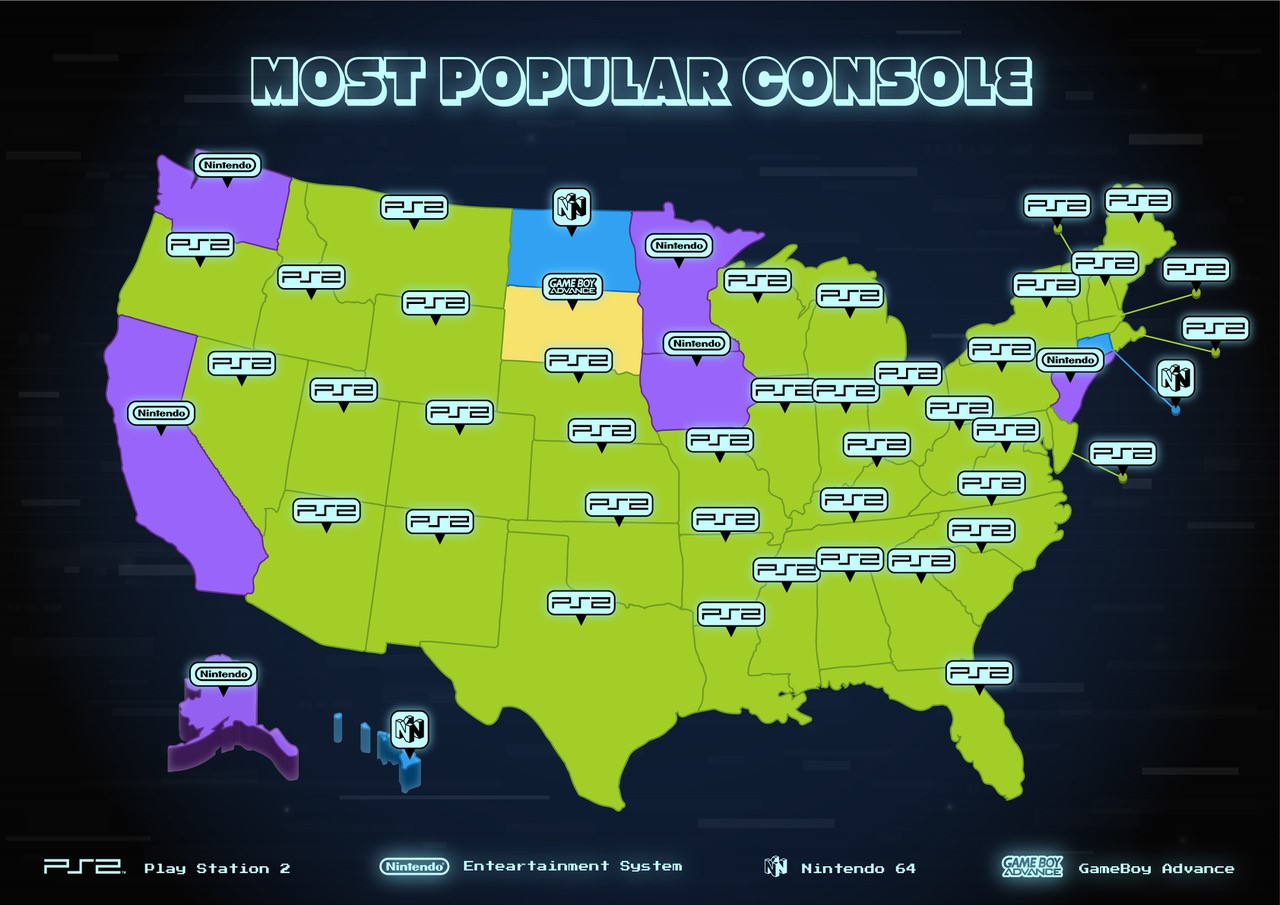Which are the most popular retro consoles in US?
Console gaming, time with friends, so many incredible memories. But did you ever asked yourself? Which are the most popular retro consoles in US? For the retro collector who has everything, or for the Japanese culture enthusiast in your life, Nintendo’s Famicom Classic is a rare and delightful gem. It shares a level of build quality (and adorability) with its NES counterpart, but comes with a couple of cult favorites that the US model missed. Filling a couple of obvious holes are River City Ransom and Mario Open Golf, but there are also some lesser-known or Japanese exclusive titles that still hold up well, stuff like platformer Atlantis no Nazo or Tecmo’s puzzler Solomon’s Key. And while the original Final Fantasy is an important piece of history, Final Fantasy III (included on the Famicom) is a better game to actually play in practically every regard.
Released in 1996 in Japan and North America and 1997 in Europe and Australia, the Nintendo 64 was Nintendo’s third console after the NES and the SNES. It sold over thirty million units in its six-year lifespan before eventually being phased out by the introduction of the GameCube. For most of us, it’s the iconic games and the next-generation graphics that we remember about the Nintendo 64. When it was first launched, it mostly competed with the Sony Playstation and the Sega Saturn, and you’ll find no shortage of Nintendo fans who think it’s a better console than both of them put together. Read more info at Most Popular Retro Gaming Consoles by State.
The PlayStation 2 (PS2) is the best-selling console of all time, with a total of roughly 155 million units sold to date. When Sony first introduced itself with its CD-reading original PlayStation, it changed the video game industry forever, and it’s fair to say the PS2 would later define it: The PS2’s backward- compatibility with original PlayStation games, DVD playback and developer-friendly kits made it the most successful console in existence. Sony decided that its PS2 console was going to be an entertainment system, but not just for video games. DVDs were huge in the early 2000s, and PlayStation 2 brought to the foray a multimedia system that doubled as a DVD player. The data format allowed for bigger games, too, making humungous series that looked like cinematic masterpieces, including Metal Gear Solid 2 and 3, God of War, Shadow of the Colossus and Grand Theft Auto III.
The venerable Atari 2600 has been revived more than most classic game consoles, and it’s still a great option to play if your gaming nostalgia takes you back before the heyday of Sega and Nintendo. While it won’t let you dust off your old cartridges, the Atari Flashback comes with more than enough games to keep you busy for a while—an impressive 105 classic games—and the Gold Deluxe edition includes both a pair of wireless joysticks and two paddle controllers. Anyone looking for the next best thing to an authentic arcade cabinet in a more compact form won’t do much better than one of Replicade’s systems. After first tackling Centipede, the crowd-funded company turned its attention to Tempest and replicated the original arcade cabinet down to the finest detail at 1/6th scale. That includes a solid wood and metal construction replete with original artwork, as well as a pair of interchangeable spinner knobs: one that’s true-to-size and a larger one that makes the game more playable in its compact form.
Looking for something a little more personal? Then go with the original. Enterprising do-it-yourselfers have been making homemade retro consoles out of the Raspberry Pi mini-computer for years. It’s a fantastic setup with enough power to play game ROMs up to around the PlayStation (one) era, and with a big enough MicroSD card, you can fit hundreds or even thousands of ROMs on there. Wireless and wired controllers are easy to work with, too, and you can even find plastic cases that mimic classic consoles. Putting a Raspberry Pi together, loading up the emulation software, and tracking down the ROMs is tricky and time-consuming, about on the level of rooting your iPhone or running a custom Android ROM. But there are tons of guides available (may we suggest our sister site How-To Geek?), and open source developers have made fantastic interfaces for the emulator packages. It doesn’t hurt that you can put together a Raspberry Pi, a custom case, a controller, and a MicroSD card loaded with the classic game ROMs of your choosing for well under $100.

Source: https://www.jjgames.com/
Comments
Comments are closed.